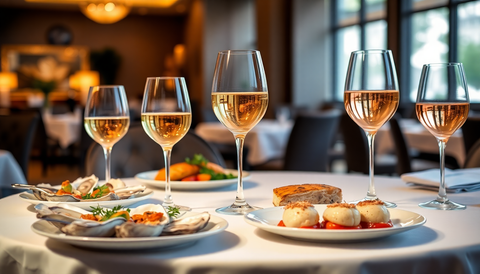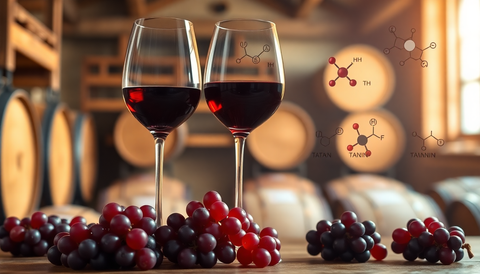As the premier wine destination in the heart of South Australia's renowned McLaren Vale wine region, McLaren Vale Cellars takes pride in offering our customers a curated selection of premium local wines. Over the years, we've encountered countless wine myths and misconceptions that often leave wine enthusiasts and casual drinkers alike feeling confused and misinformed.
In this comprehensive blog post, we aim to bust some of the most common wine myths and separate fact from fiction, empowering you to make more informed choices about the wines you enjoy. Whether you're a seasoned oenophile or just starting to explore the world of wine, this guide will provide you with the knowledge and confidence to navigate the ever-evolving landscape of viticulture.
Myth 1: Expensive Wines Are Always Better
One of the most persistent wine myths is the notion that the more expensive a wine is, the better it must be. While there is certainly a correlation between price and quality in the wine world, it's not a universal rule. Many factors contribute to the pricing of a wine, including production costs, brand recognition, and market demand.
In reality, some of the most exceptional and sought-after wines can be found at relatively affordable price points. Conversely, a high price tag doesn't necessarily guarantee a superior drinking experience. Factors such as personal taste preferences, food pairings, and the occasion can all play a significant role in determining the enjoyment of a wine.
At McLaren Vale Cellars, we pride ourselves on offering a diverse selection of wines that cater to a range of budgets and preferences. Our knowledgeable staff is always on hand to guide you through our collection and help you discover hidden gems that may not carry a hefty price tag but deliver an exceptional drinking experience.
Myth 2: Red Wine Is Better for You Than White Wine
The notion that red wine is inherently healthier than white wine is a common misconception. While both red and white wines can offer potential health benefits, the differences are not as straightforward as many believe.
The primary distinction lies in the presence of antioxidants, specifically resveratrol, which is found in higher concentrations in red wines. Resveratrol has been linked to various health benefits, including improved cardiovascular health and reduced inflammation. However, the actual health benefits of resveratrol are still a subject of ongoing research, and the amounts present in wine may not be sufficient to produce significant effects.
Moreover, white wines also contain their own set of beneficial compounds, such as polyphenols, which can contribute to overall health. Additionally, the potential health benefits of wine consumption are highly dependent on individual factors, such as overall diet, lifestyle, and moderation.
At McLaren Vale Cellars, we encourage our customers to explore both red and white wines, focusing on finding the ones that best suit their personal preferences and dietary needs. Our knowledgeable staff can provide guidance on the potential health implications of different wine varieties, empowering you to make informed choices.
Myth 3: Older Wines Are Always Better
The belief that older wines are inherently superior to younger wines is a common misconception. While it's true that certain wines can benefit from aging and develop more complex flavors and aromas over time, this is not a universal rule.
The aging potential of a wine is largely dependent on the grape variety, the winemaking techniques used, and the specific conditions under which the wine is stored. Some wines, particularly those with high tannin and acidity levels, can indeed improve with age, becoming more balanced and nuanced. However, other wines may reach their peak flavor profile relatively quickly and may not necessarily improve with extended aging.
Furthermore, improper storage conditions, such as exposure to heat, light, or fluctuations in temperature and humidity, can cause a wine to prematurely age or even become spoiled. As a result, the quality and drinkability of an older wine can be highly variable and dependent on the specific circumstances of its storage and aging.
At McLaren Vale Cellars, we carefully curate our selection of wines to ensure that our customers have access to a range of options, from young, vibrant wines to carefully aged, complex offerings. Our knowledgeable staff can provide guidance on the optimal drinking windows for different wines, helping you make informed decisions about when to enjoy your favorite bottles.
Myth 4: All Wines Should Be Served at Room Temperature
The idea that all wines should be served at room temperature is a common misconception that can significantly impact the overall enjoyment of a wine. While this may have been true in the past, when room temperatures were generally cooler, modern living conditions have changed the landscape of optimal wine serving temperatures.
In reality, the ideal serving temperature for a wine can vary greatly depending on the grape variety, the style of the wine, and personal preferences. For example, light-bodied white wines and sparkling wines are often best enjoyed when chilled, as the lower temperature can help to accentuate their freshness, acidity, and delicate aromas. On the other hand, full-bodied red wines may benefit from being served slightly cooler than traditional room temperature, as this can help to soften the tannins and enhance the wine's complexity.
At McLaren Vale Cellars, we encourage our customers to experiment with different serving temperatures to find what works best for their personal tastes. Our knowledgeable staff can provide guidance on the optimal serving temperatures for the wines in our collection, ensuring that you can enjoy each bottle to its fullest potential.
Myth 5: Screw Caps Indicate a Low-Quality Wine
The perception that wines with screw caps are of lower quality than those with traditional cork closures is a common misconception that persists in the wine industry. While cork has long been the standard closure for fine wines, the use of screw caps has been steadily increasing, particularly for certain wine styles and regions.
In reality, screw caps can be an excellent closure option, offering a number of benefits that can actually enhance the quality and longevity of a wine. Screw caps are highly effective at preventing oxidation, which can lead to premature aging and the loss of a wine's freshness and vibrancy. They also eliminate the risk of cork taint, a common issue that can impart undesirable flavors and aromas to the wine.
Furthermore, many renowned winemakers and producers have embraced the use of screw caps, recognizing their ability to consistently preserve the integrity and character of their wines. At McLaren Vale Cellars, we proudly offer a selection of high-quality wines with screw cap closures, confident in their ability to deliver an exceptional drinking experience.
Conclusion
By busting these common wine myths, we hope to empower you to approach the world of wine with a more informed and open-minded perspective. Remember, the enjoyment of wine is a highly personal experience, and what matters most is finding the wines that truly resonate with your individual tastes and preferences.
At McLaren Vale Cellars, we are committed to providing our customers with a curated selection of premium local wines, as well as the knowledge and guidance to help you navigate the ever-evolving landscape of viticulture. Whether you're a seasoned oenophile or just beginning your wine journey, we invite you to visit our shop and explore the diverse offerings that the renowned McLaren Vale region has to offer.




Comments (0)
There are no comments for this article. Be the first one to leave a message!